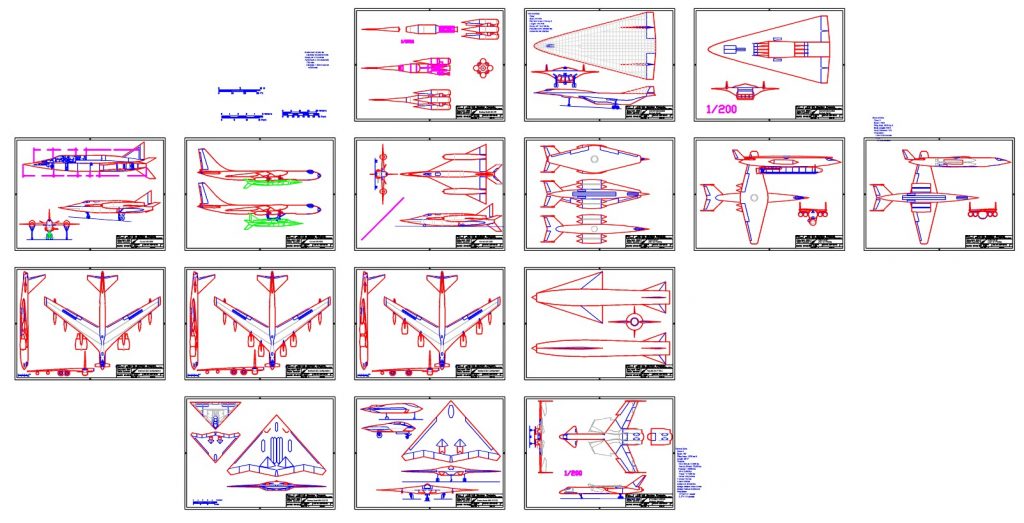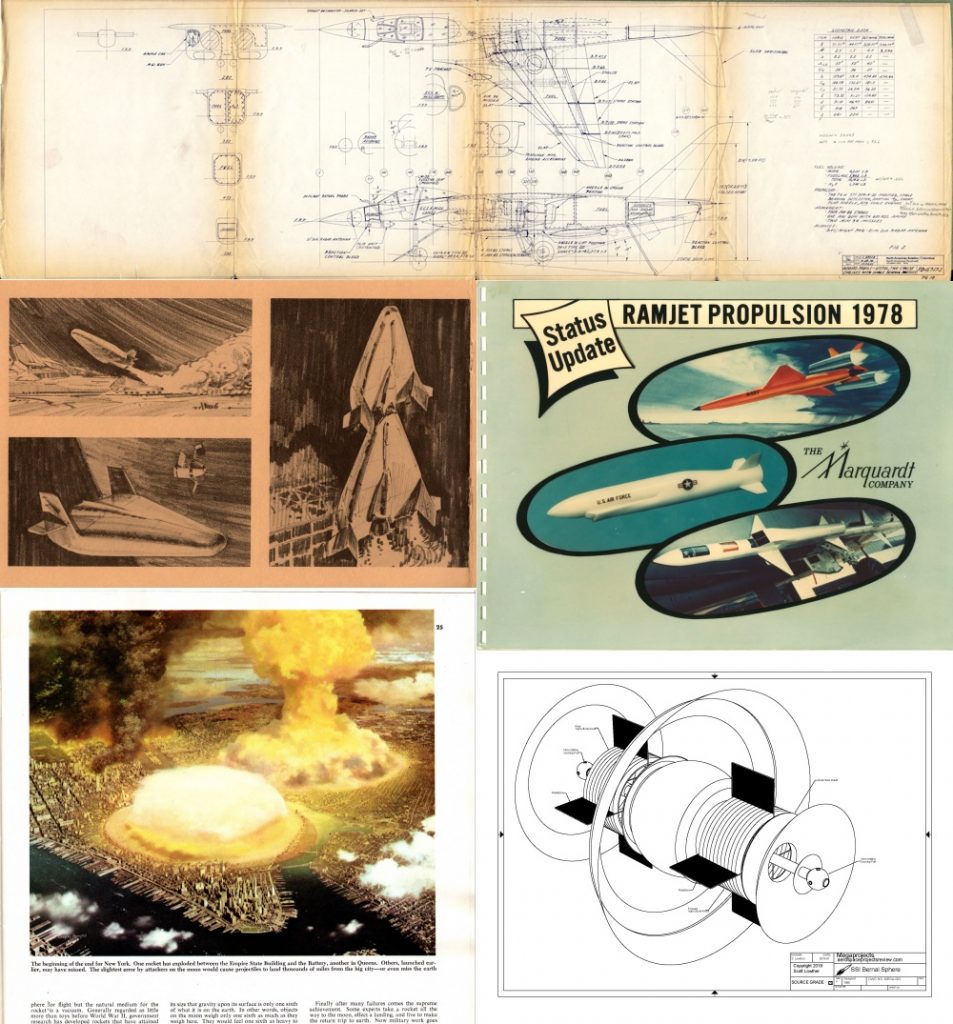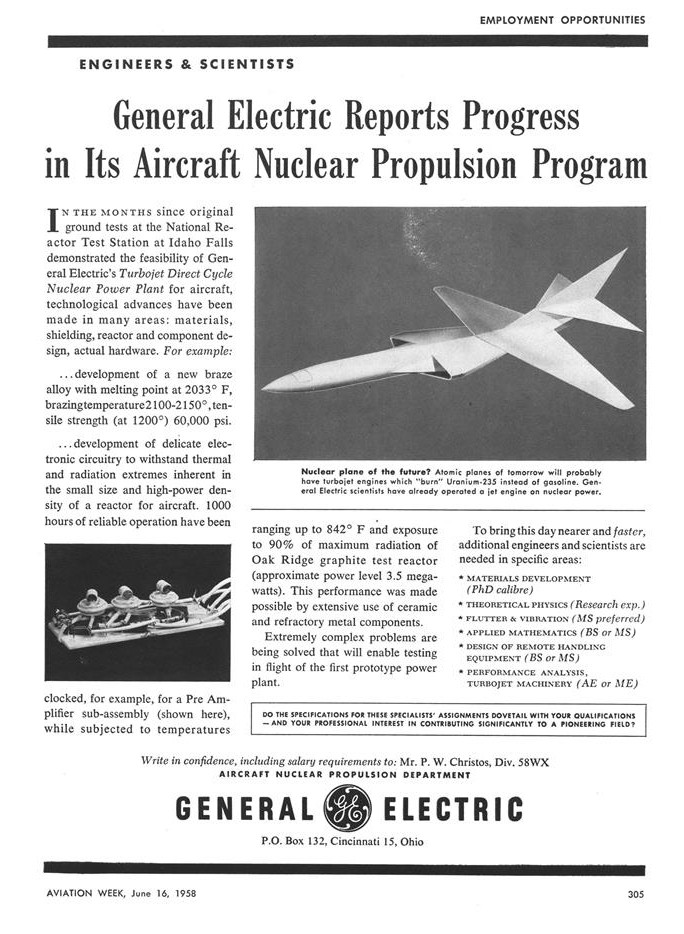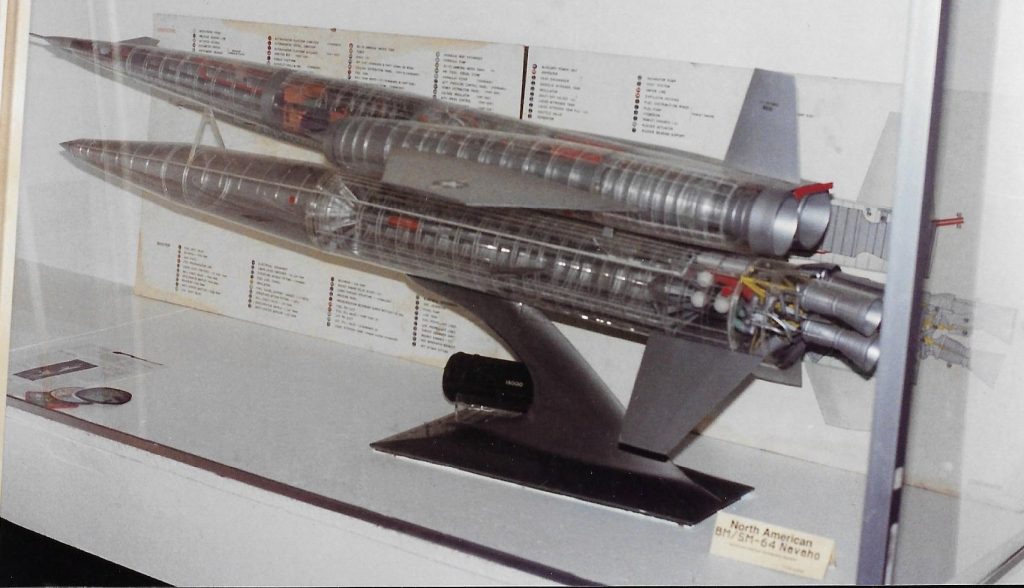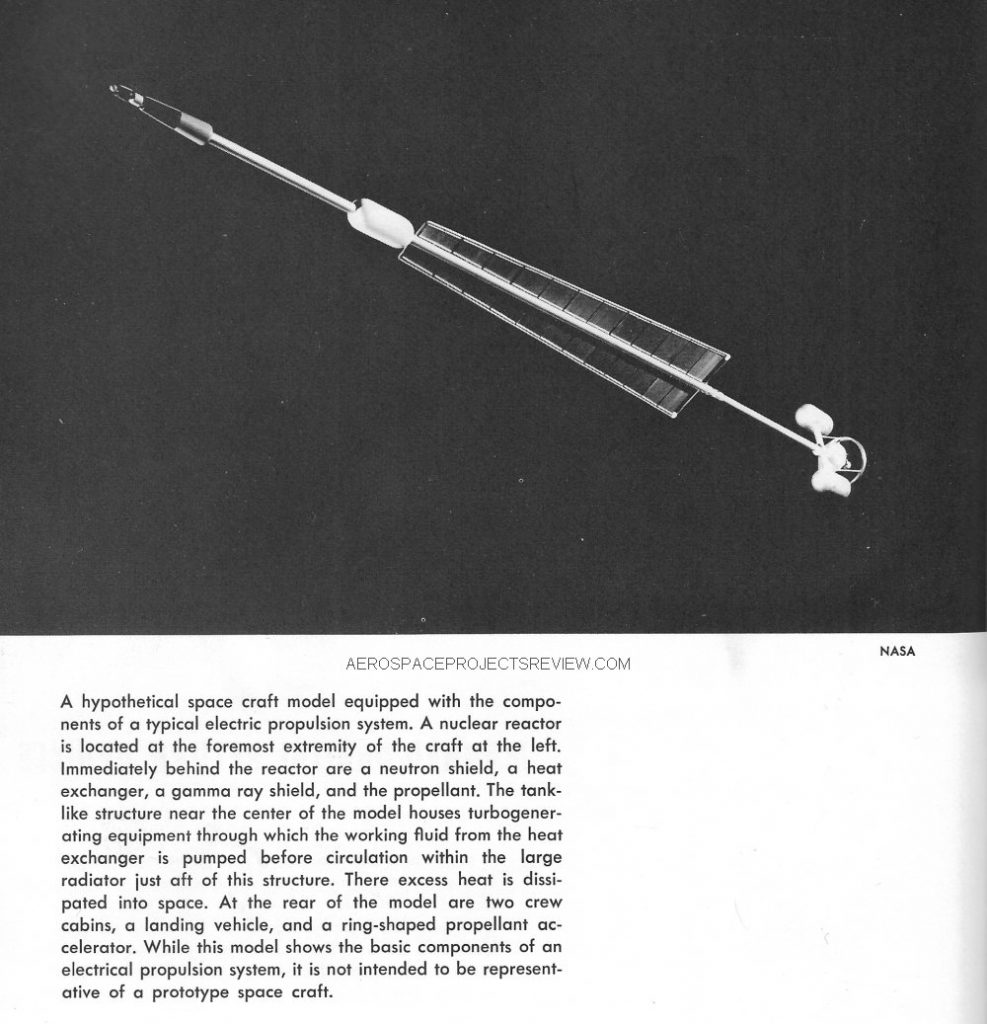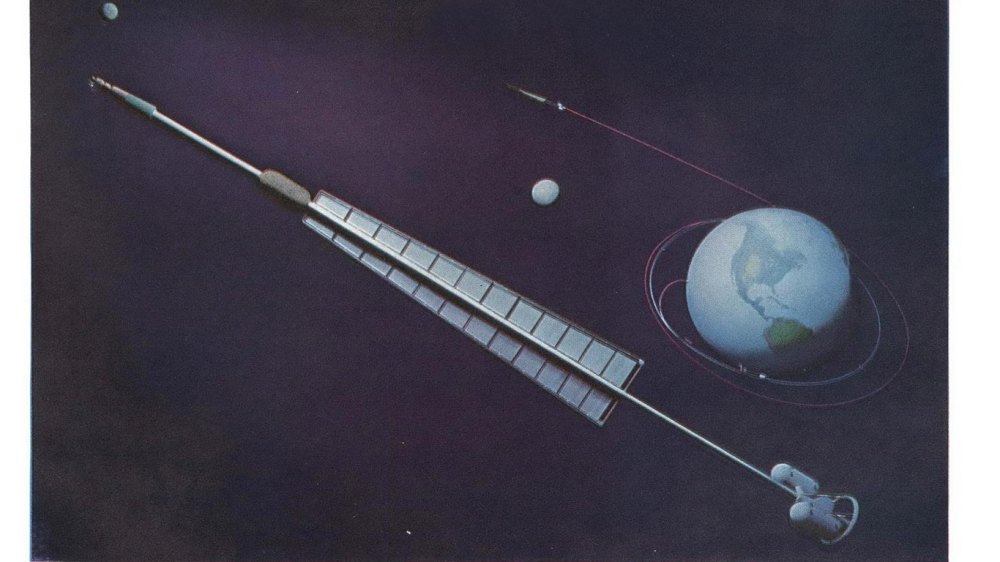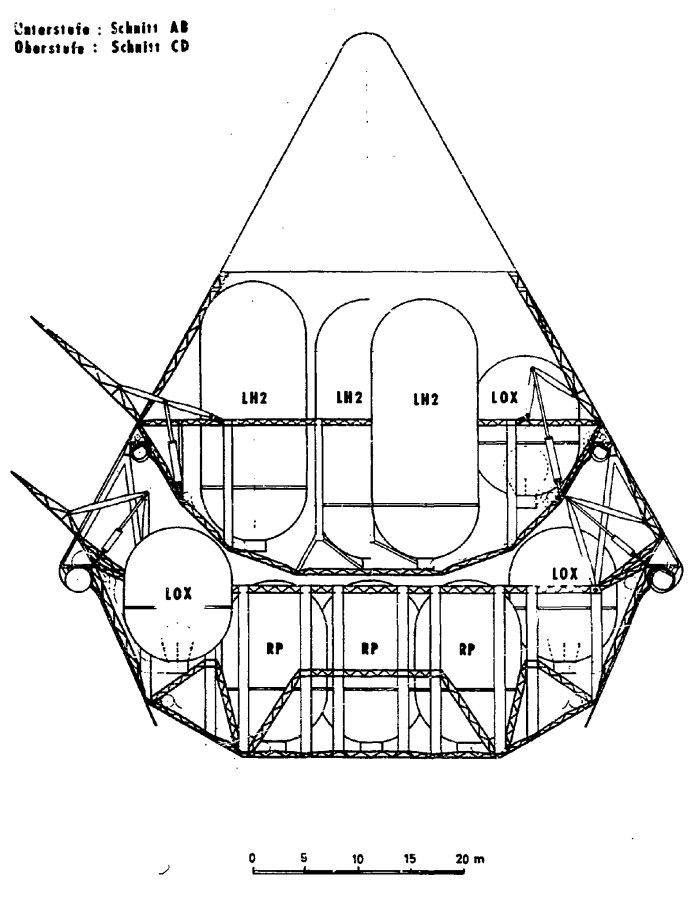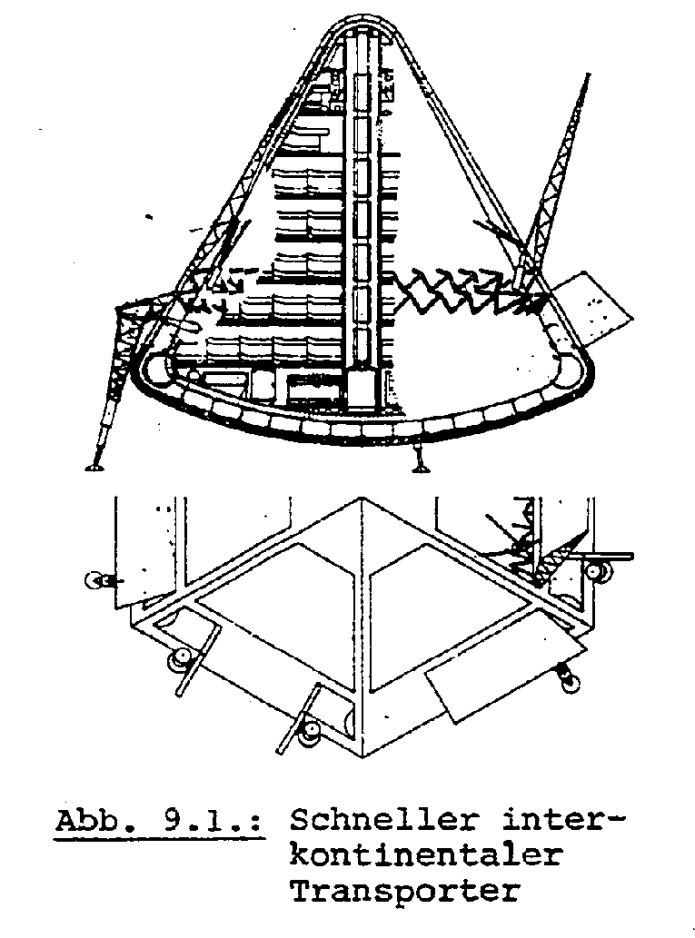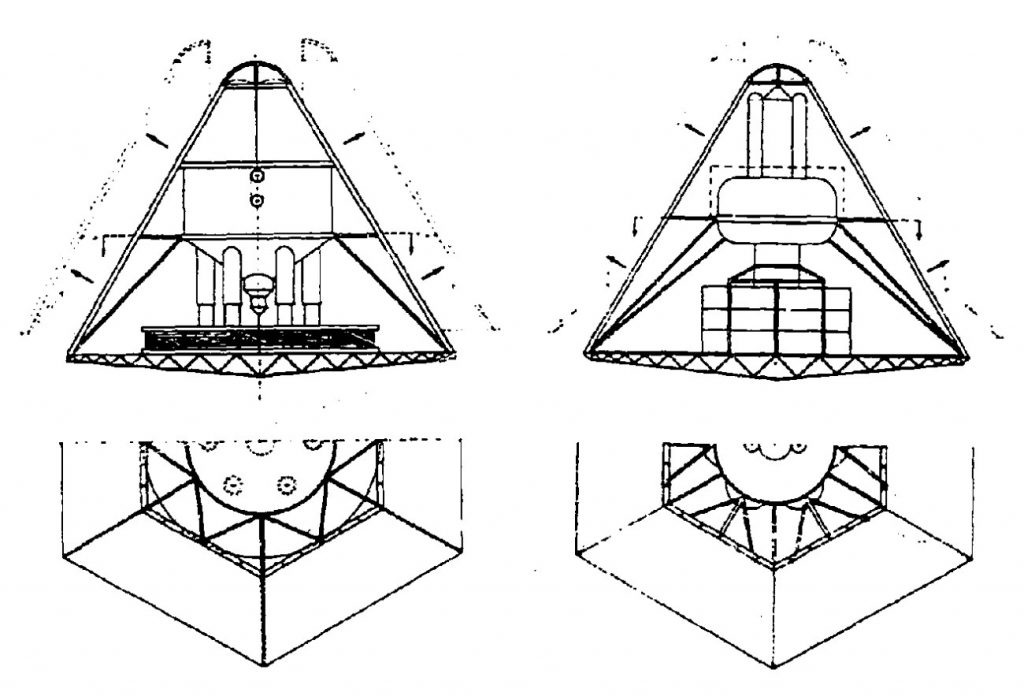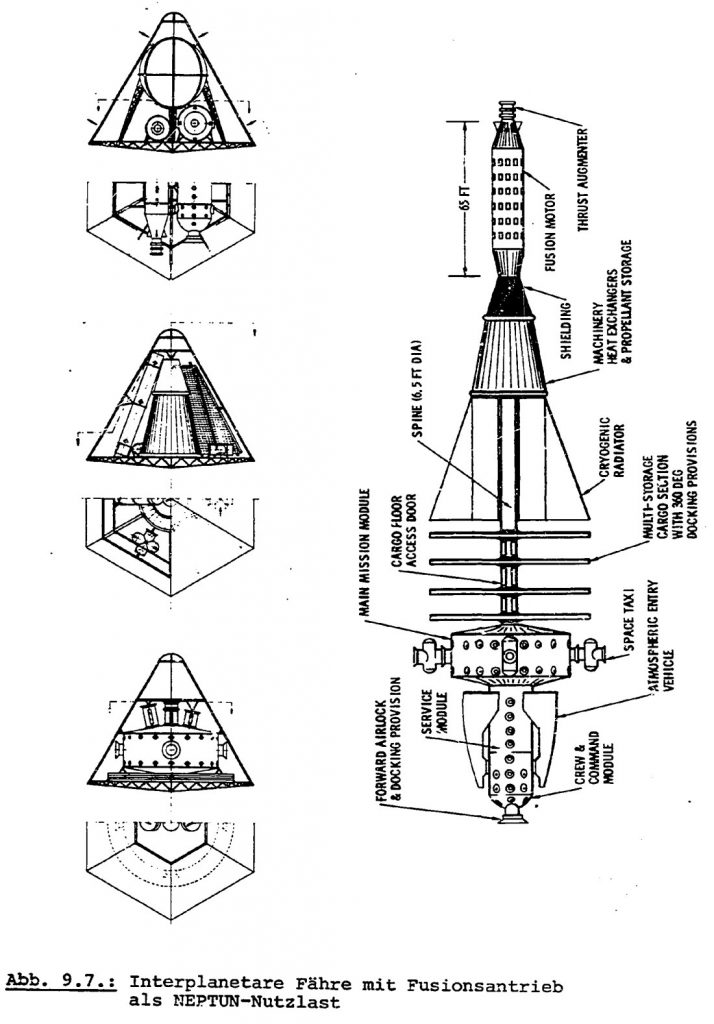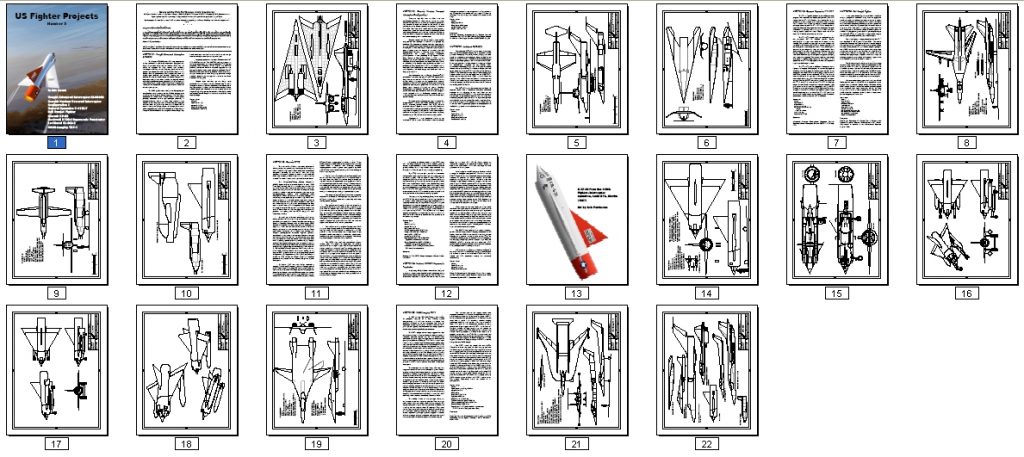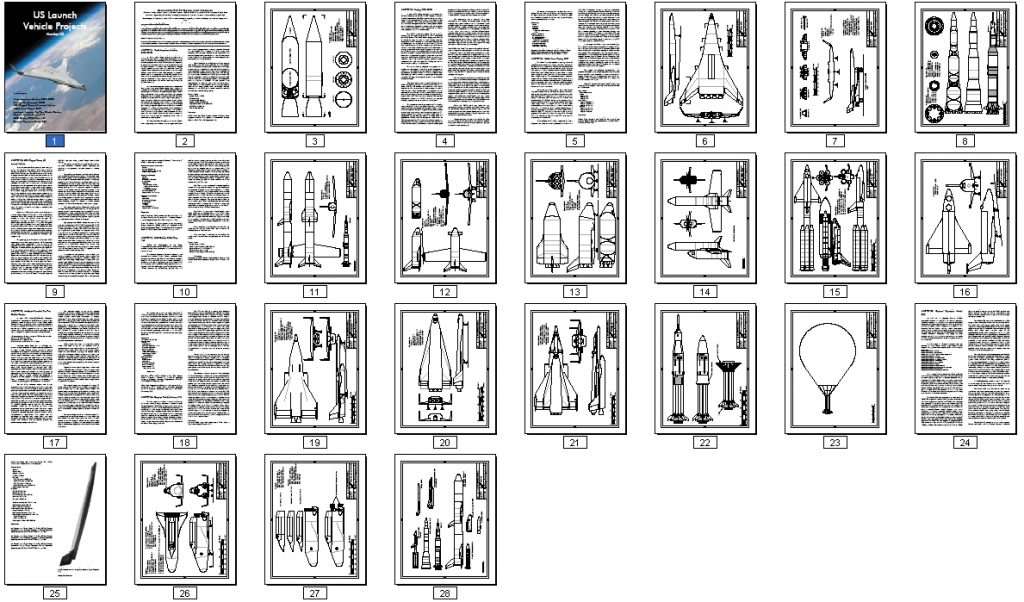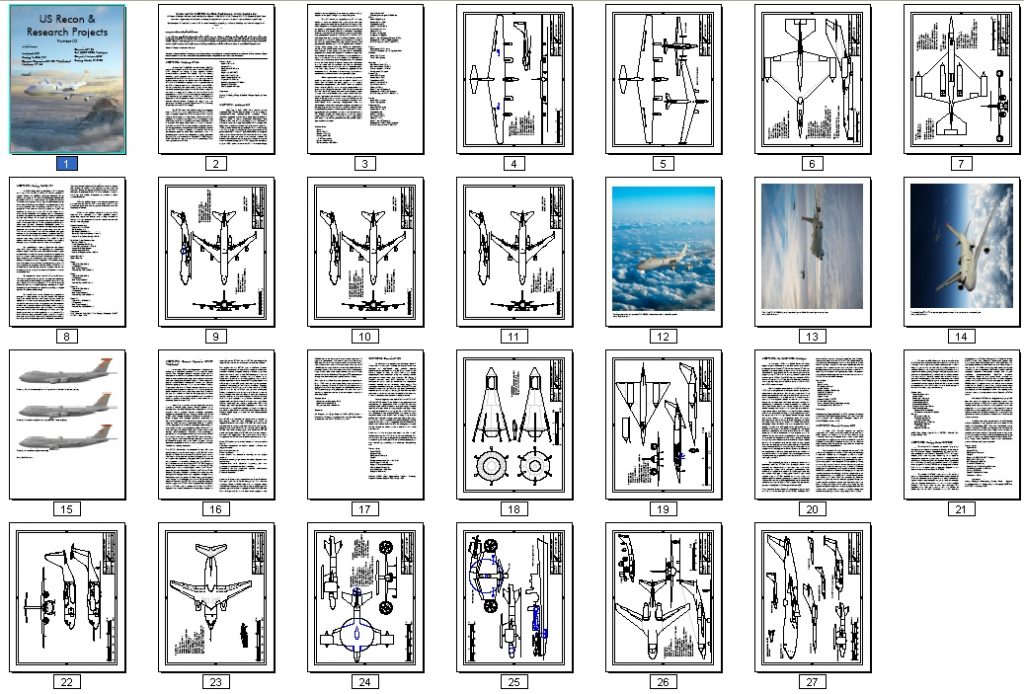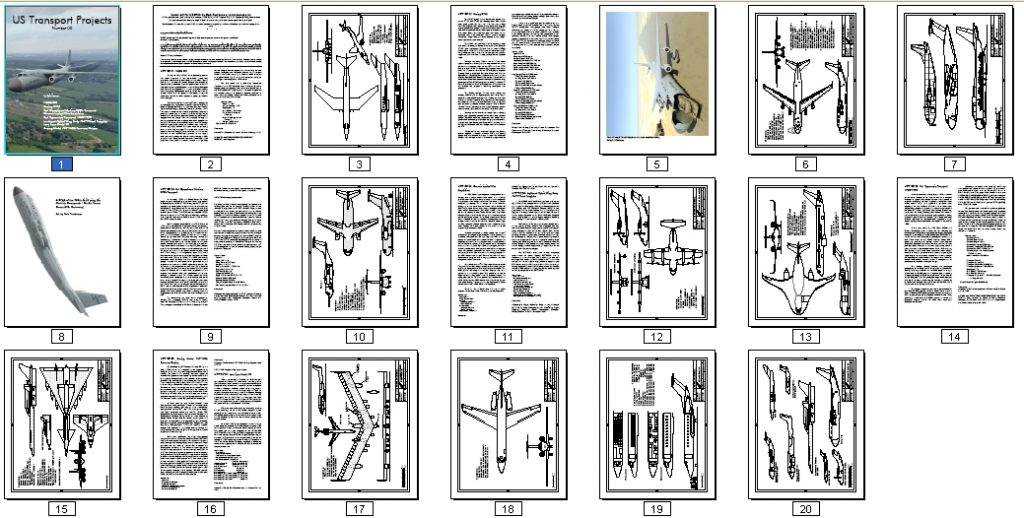An early look at the next US Bomber Projects.
On the 29th, APR Patrons and Monthly Historical Documents program subscribers were sent emails containing links to the January, 2019 rewards. This months set of documents and diagrams included high-rez copies of:
Document: “ASTRO A Manned Reusable Spacecraft Concept,” a Douglas Missiles & Space brochure from August, 1962, describing a two-stage Shuttle-like vehicle
Document: “Status update Ramjet Propulsion 1978” a brochure from the Marquardt Company
Document: “Rocket Blitz Form the Moon” an article from the October 23, 1948 issue of “Colliers” magazine describing the use of the Moon as a missile base, with some helpful Bonestell illustrations of Manhattan getting nuked.
Diagram: A large format color scan of the 1970 North American Rockwell PD-157-17-2 HIPAAS V/STOL jet fighter
CAD Diagram: isometric view, Bernal Sphere space habitat
If this sort of thing is of interest and you’d like to get in on it and make sure you don’t miss any of the forthcoming releases, sign up either for the APR Patreon or the APR Monthly Historical Documents Program.
A magazine ad from 1958, extolling the nuclear aircraft project and seeking employees. The aircraft shown should probably be considered hypothetical, rather than the result of a concerted engineering design. Still… I am looking for more information on it. And what’s frustrating is that some 30+ years ago I *did* see more on it. I recall poking around in the basement of a library in Iowa, digging through their musty collection of magazines, when I saw something else on this, showing a top view of this design. But at the time, the ten cents required to make a photocopy was a cause for concern, especially as I had many other copies to make. I didn’t copy it, and I’ve been beating myself up about it ever since. Is it familiar to anyone?
Two pieces of NASA-marked (but likely not NASA-produced) concept art from the 1960’s depicted artificial-G space stations.
The first station (previously presented here in black and white not so long ago) depicts a substantial three-armed station witha multi-segment spine and three habitats. At one end of the spine is a nuclear reactor and its radiator; at the other end is a presumably rotationally0decoupled docking section. There is also an external “track” with two cars seemingly to provide transport from one habitat to another; it doesn’t really seem like this would provide a substantial improvement in transport over simply taking an elevator from one hab up to the spine and then down another elevator to the destination hab.
This space station, which appears from the art style to be a Grumman design, is a single-launch space station to be launched atop a Saturn V. The two arms would fold back for storage on the launch vehicle and would deploy once in orbit. An Apollo CSM is shown approaching for docking along the centerline; it’s not clear if the docking cone was rotationally decoupled. if it was not, the two Apollo-like capsules hanging off the sides of the cone are a bit of a head scratcher.
Both renderings have been uploaded in their full resolution to the 2019-01 APR Extras dropbox folder. This folder is available to APR Patreon Patrons and APR Monthly Historical Documents Program subscribers at the $4 per month level and above.
I was sent this photo of a large scale model of the North American SM-64 “Navajo” two-stage cruise missile. the model, largely made from clear plexiglas, was some years ago on display in a Quonset hut at the Planes of Fame Museum in Chino, California. Sometime after this photo was taken the museum was shut down, reworked and re-opened, and after that the museum was no longer in evidence. The photographer wishes to know what became of this model. Anyone know?
A NASA model circa 1959 illustrating the general configuration of a nuclear-electric spacecraft for the exploration of Mars. While apparently not meant to represent a serious design proposal, the general configuration is much the same as those created decades later. It features a nuclear reactor at the nose, a long boom with a pair of radiators to get rid of the heat produced by the reactor, and payload at the tail. Payload includes crew areas and an indistinct lander. The ring at the rear is the “propellant accelerator,” which is not described; presumably it is a structural ring holding a bank of ion engines or the like.
Note that the radiators are tapered. This is common in such designs: the gamma ray and neutron shields behind the reactor only block a relatively small portion of the emitted radiation. The radiators fit within that shadowed cone; if the radiators projected out into the unshielded volume, not only could the radiation do some damage to the structural materials it would also heat them up… defeating the whole point of radiators.
This basic layout would still be applicable today, with the main difference being that the engines might well be located elsewhere, firing in a different direction. The reactor could well be at the tail; leaving the engines where they are would turn the long boom into a structure in tension, meaning that the reactor would be “hanging” down. This would be structurally more efficient… after all, the reactor could certainly hang from a string, but a ship could hardly push on a string. Or the engines could be located near the ships center of gravity, firing “sideways.” This would be trickier for the boom, but if the engines are indeed low-thrust ion engines, the forces involved would be almost negligible. Or with a similar arrangement the ship could be made to tumble end over end; with the engines at the CG they could continue to fire “sideways” while the crew enjoyed at least some measure of artificial gravity.
In the late 1960’s H.H. Koelle of the Technische University Institut Fuer Raumfahrttechnik in Berlin devoted considerable effort to studying a reusable heavy lift launch vehicle. A good, well-illustrated report was put out in 1968 covering the design:
Entwurfskriterien fur groBe wiederverwendbare Tragersysteme (Design Criteria for Large Reusable Space Transportation Systems)
Note that the Neptun was *gigantic.* It was a two-stage ballistically recovered design, unusual in that rather than being circular in cross-section it was hexagonal. The individual propellant tanks were each the size of or bigger than the S-IC first stage of the Saturn V.
A number of payloads were proposed. One was a sub-orbital intercontinental passenger transport, The passenger “capsule” would land separate from the Neptun itself.
One of the more interesting payloads contemplated was a large Orion nuclear pulse vehicle, transported in two pieces (propulsion module in one launch and payload/pulse units in the other). Presumably this would be a NASA Orion hitching a ride on a West German booster; I suspect politics would have negated the likelihood of the West Germans developing a mass production line for nuclear explosives.
This fusion-powered interplanetary spacecraft is also a NASA design, dating from the early 1960’s.
Support the APR Patreon to help bring more of this sort of thing to light!
A Dow Corning magazine ad from late 1969 by famed and prolific space artist Robert McCall illustrating a nuclear-powered artificial gravity space station. It’s a nifty painting, the original of which was apparently given away in a contest; all entrants were apparently given a full color print of the artwork.
Now available… four new issues in the US Aerospace Projects line.
US Fighter Projects #3
Cover art was provided by Rob Parthoens, www.baroba.be
US Fighter Projects #03 is now available (see HERE for the entire series). Issue #3 includes:
- Vought Advanced Interceptor AI-0604R: a dart-winged ejector ramjet-powered concept
- Convair Nuclear Powered Interceptor Configuration I: a single0seat interceptor with a nuclear reactor
- General Dynamics F-111X-7: A stretched F-111 for bomber escort and interception
- Bell Ramjet Fighter: A subsonic small fighter from the end of WWII
- Convair XP-92: A post-war delta-winged ramjet powered supersonic interceptor
- Rockwell D736-4 Supersonic Penetrator: the wings could sweep back entirely within the fuselage
- Lockheed CL-362-2: A high-altitude hypersonic rocketplane
- NASA-Langley TBF-1: an unusual supercruiser
USFP #3 can be downloaded as a PDF file for only $4.25:
——–
US Launch Vehicle Projects #5
Cover art was provided by Rob Parthoens, www.baroba.be
US Launch Vehicle Projects #5 is now available (see HERE for the entire series). Issue #5 includes:
- North American Aviation 600K SSTO: an early concept for cheap space launch
- Boeing “Windjammer” SSTO: A horizontal takeoff design form the early 70s
- JSC Winged Heavy Lift Launch Vehicle: A giant SPS launcher
- NASA Nova “Saturn C-8”: an early Apollo booster
- Lockheed Reusable Ten-Ton Orbital Carrier: A logistics system from the early 60s
- Chrysler Hot Air Balloon S-IB: An unusual approach to booster recovery
- MSC Orbiter 042A Titan IIIL6: A shuttle design with a delta-winged orbiter on an enlarged Titan
- General Dynamics Model 202: a preliminary design for a Brilliant Pebbles launcher
USLP #5 can be downloaded as a PDF file for only $4.25:
——–
US Recon & Research Projects #3
Cover art was provided by Rob Parthoens, www.baroba.be
US Recon & Research Projects #3 is now available (see HERE for the entire series). Issue #3 includes:
- Lockheed A-2: An early design leading to the SR-71
- Boeing NuERA 747: A nuclear powered 747
- General Dynamics SX-109 “Pathfinder”: a subscale SSTO demonstrator
- Northrop N-165: A giant U-2 alternate
- Convair M-125: A high altitude/speed single seat recon plane with toxic fuel
- Bell AMST STOL Prototype: A heavily modified C-130
- Convair Nuclear AEW: unmanned, nuclear powered VTOL fleet defense recon platform
- Boeing Model 818-300: an early 60s battlefield surveillance platform
USRP #3 can be downloaded as a PDF file for only $4.25:
——–
US Transport Projects #8
Cover art was provided by Rob Parthoens, www.baroba.be
US Transport Projects #8 is now available (see HERE for the entire series). Issue #8 includes:
- NACA SST: a 1947 concept
- Boeing CX-HLS: Boeings design for what became the C-5
- Bell Operational Medium STOL Transport: vectored thrust for short takeoff
- Convair Limited War Amphibian: A concept for a single plan to meet both land and sea plane requirements
- Bell Hypersonic Transport 1980-1990:A two-stage turboramjet/rocket concept
- Lockheed Hybrid Wing Body 757PF-Sized Freighter: a recent design for an advanced transport
- Lear Liner Model 40:a small airliner/large executive transport
- Boeing Model 759-153A Resource Carrier: A big flying wing natural gas “tanker”
USTP #8 can be downloaded as a PDF file for only $4.25:
——–
This is what a manned mission to Mars dating from the late Apollo era would have looked like: a cluster of hydrogen tanks with a small number of NERVA nuclear rockets. The spacecraft would have been relatively gigantic as it leaves Earth orbit; large enough that it would have been assembled in space from at least six Saturn V launches. When it returns to Earth it would have been little more than the mission module; this would blast past Earth and continue in solar orbit while the astronauts and a few trifling hundreds of pounds of Martian souvenirs would have plowed into Earths atmosphere in a compact entry capsule. The mission module itself is described fully and heavily illustrated in US Spacecraft Projects #3.
I’ve uploaded the full rez versions of these renderings to the 2018-11 APR Extras folder on Dropbox, available to all APR Patrons at the $4 level and above. If this sort of thing is of interest, please consider signing up for the APR Patreon.
